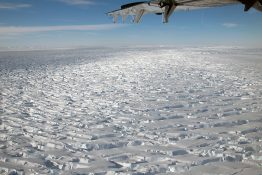Few people have spent as much time studying mammals in the Arctic as Kristin Laidre, a University of Washington polar scientist and expert on marine mammals. One exception would be Inuit subsistence hunters, who for generations have relied on these mammals for nutritional, economic and cultural reasons. A new study documents the experience of these hunters and what it might show about changing conditions for polar bears on Greenland’s east coast.
Read more at UW Today »Broccoli in space: How probiotics could help grow veggies in microgravity
Astronauts at the International Space Station are spending more time away from Earth, but they still need their daily serving of vegetables. In the quest to find a viable way for crew to grow their own veggies while orbiting, student researchers are sending broccoli seeds coated with a healthy dose of probiotics to space. Six broccoli seeds are aboard the Orbital ATK Cygnus spacecraft that launched last week from Wallops Island, Virginia, as part of a space station cargo resupply mission.
Read more at UW Today »A promising target in the quest for a 1-million-year-old Antarctic ice core
Ice cores offer a window into the history of Earth’s climate. Layers of ice reveal past temperatures, and gases trapped in bubbles reveal past atmospheric composition. The oldest continuous ice core so far comes from Dome C in East Antarctica and extends back 800,000 years. But a tantalizing clue recently offered the possibility to go back even further. A collaborative study between the University of Washington and the University of Maine now pinpoints a location where an entire million years of undisturbed ice might be preserved intact.
Read more at UW Today »Q&A with UW Environment volcano and magma expert George Bergantz
The University of Washington’s College of the Environment and its faculty members are no strangers to ground-breaking and important research on volcanoes and magma—from a land-sea experiment tracking earthquakes and volcanoes along the Alaska Peninsula to publishing an atlas of seafloor volcanoes and deep-ocean life. George Bergantz, a professor in the College’s Department of Earth and Space Sciences, is a geologist who studies the physics of magma.
Read more »UW researchers will survey Antarctica’s Thwaites Glacier as part of major international effort
The National Science Foundation and the U.K.’s Natural Environmental Research Council this month announced a joint 5-year, $25 million effort to study Antarctica’s Thwaites Glacier. Nicknamed the “world’s most dangerous glacier,” Thwaites Glacier already is contributing to rising seas; if it collapsed it would raise global sea level by about three feet. The glacier may also act as a linchpin on the whole West Antarctic Ice Sheet, which could raise sea level by much more.
Read more at UW Today »





